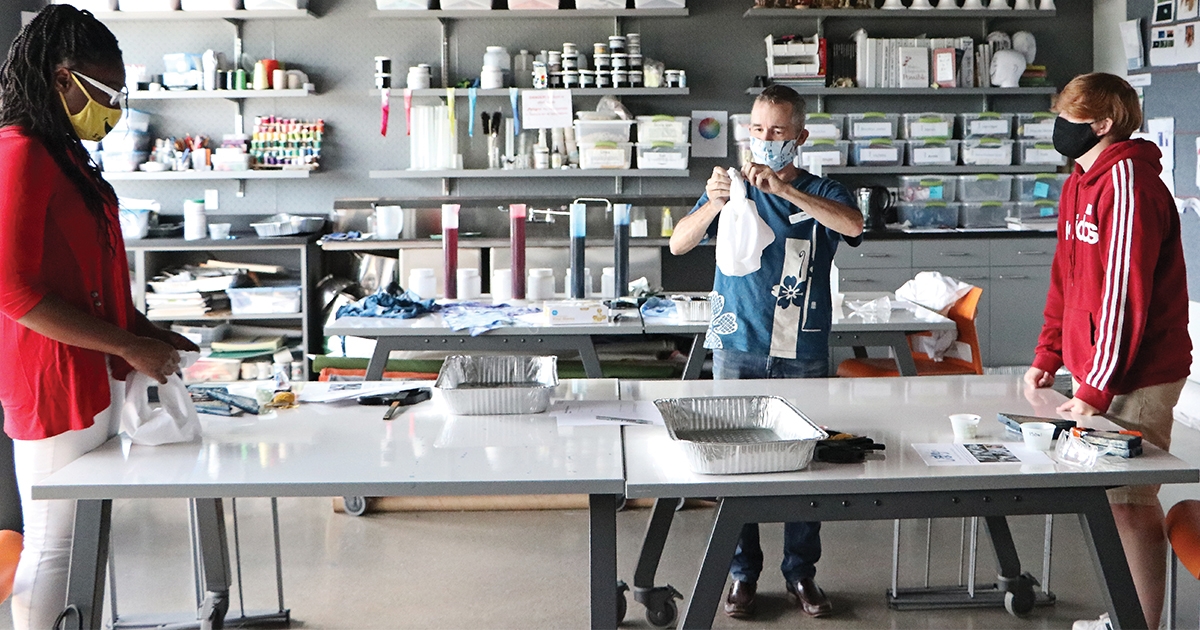Among the many organizations impacted by COVID-19 are nonprofits, whose staff and volunteers have historically worked in person with members of our community, making direct and measurable differences in their lives.
One such organization is the Creative Youth Center. Located in Grand Rapids, the organization’s mission is “to support students’ writing and amplify their voices.” That mission has been achieved in many ways, including the annual publication of a book of student writing, live events, film projects, and more — but the heart of it was through individual one-on-one or small group sessions, done in person.
Recently, the CYC was forced to pause programming. Program manager Kait Polzin talked to me about the difficulty of that decision.
“We paused last spring,” she said. “We knew that we didn’t have resources to complete the spring term. We had a lack of board capacity and time to maintain operations. We had to restructure, and we weren’t going to be able to run programming while doing that.”
The possibility of going virtual was considered. One concern was that many children are attending school virtually; the idea of adding additional virtual time on top of that wasn’t appealing. Additionally, the online gap had to be considered.
“Many of our students are in the southeast neighborhood, the Baxter/Madison area. Not everyone has access to the internet, or someone to work with them to help them get online or logged into sessions.”
The decision to pause programming was made in June of last year.
Asked when the CYC’s doors could theoretically reopen, she said, “We don’t have a physical space right now. We think it would take some time to figure out how to restructure. Are there mobile opportunities? Sure. We’d love to get back into schools, for instance. But if the coronavirus disappeared right now, I don’t see us having full-blown programming until the fall at best.”
And yet, work continues. A newly designed website will be launched soon. Despite the pause, volunteers are still needed, for everything from marketing assistance to people who can review drafts of content and provide feedback. “We need invested community members who have passion, or experience, or interest.” And events are coming, although she couldn’t yet reveal he details.
Despite the continued work, it’s possible the CYC could never reopen. “It’s a real danger. We’re on the edge. But I think we have great momentum and a core group of supporters that are encouraging us to sally forth. We feel confident despite the challenges. The Creative Youth Center is here to stay.”
The West Michigan Center for Arts and Technology, or WMCAT, has also been impacted by the pandemic — though in a different way, having unique resources.
Trudy Ngo-Brown, director of arts and tech, advised that the group’s mission is “to provide equitable access to opportunity, creating a culture for people to make social and economic progress in their lives and community. We fulfill this mission through visual arts and tech engagement, workforce development, and social enterprises.”
Ngo-Brown joined the organization in 2015. She oversees the Teen Arts + Tech After School Program and the daytime and summer programming experiences in visual and media arts for youth.
Unlike the smaller Creative Youth Center, WMCAT has been fortunate enough to maintain programming. The organization “has transitioned to a hybrid of remote and limited in-person instruction,” within the confines of state and local guidelines.
“Within my team and across the organization, we all engaged in multiple iterations of scenario planning in order to respond effectively to changing health data and restrictions on gatherings. Balancing those needs with our mission has been challenging,” Ngo-Brown said.
The physical space matters. Historically, the Arts + Tech program has provided in-person access to supplies and equipment that otherwise may not have been available to its students. Additionally, it provides something less tangible, but in some ways more important: a safe space, in which anyone can feel welcome.
The organization pivoted quickly to virtual activities. Staff had to “consider how we might mitigate the feelings of social isolation and low motivation that many teens and parents reported feeling.”
Last fall, “WMCAT Where You’re At” was launched. The program, mostly virtual, did offer some limited in-person access to studios. There was no cost to the students, either for tuition or supplies, thanks to grants from organizations including the Kent County COVID Relief Fund and corporate partners like OST.
In one silver lining, going remote allowed the organization to expand eligibility. Anyone in grades seven through senior year of high school were welcome (previously, 9th through 12th), so long as they were a Kent County student (previously, only GRPS students qualified). Class subjects included stop-motion animation, photography, zine-making, and more.
“It’s been challenging to convert such hands-on instruction into a remote format, but I’m proud to say that we engaged over 100 students this past fall.”
Ngo-Brown notes that teens have spoken about the difficulty in staying motivated during remote learning, as well as the challenges around managing their time.
She looks forward to the day that WMCAT can reopen its doors. “I can’t wait to welcome students back into our space. Our organization is nimble enough and have been preparing for a return, so if the virus magically disappeared tomorrow, we’d be ready for our students.”





